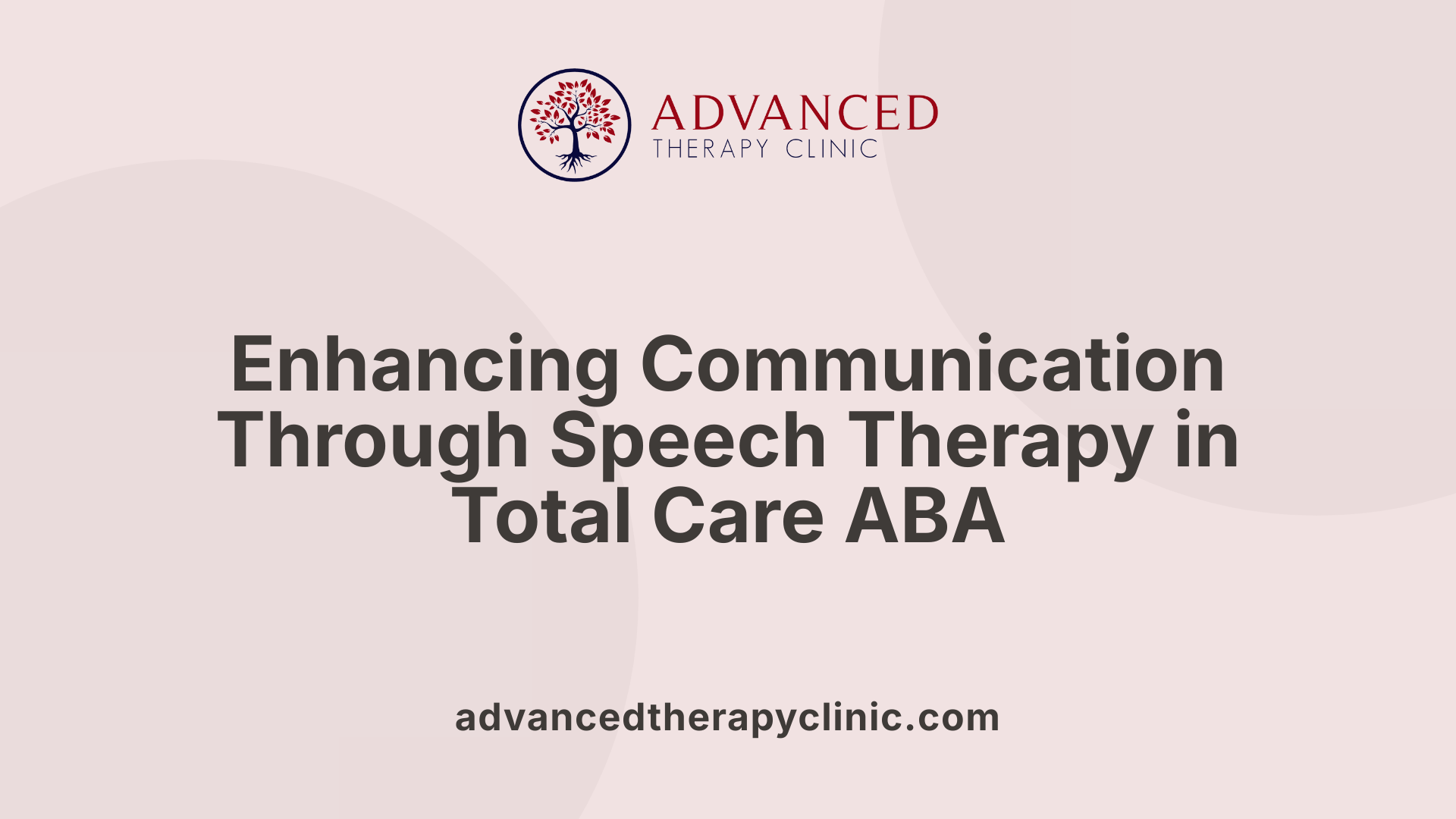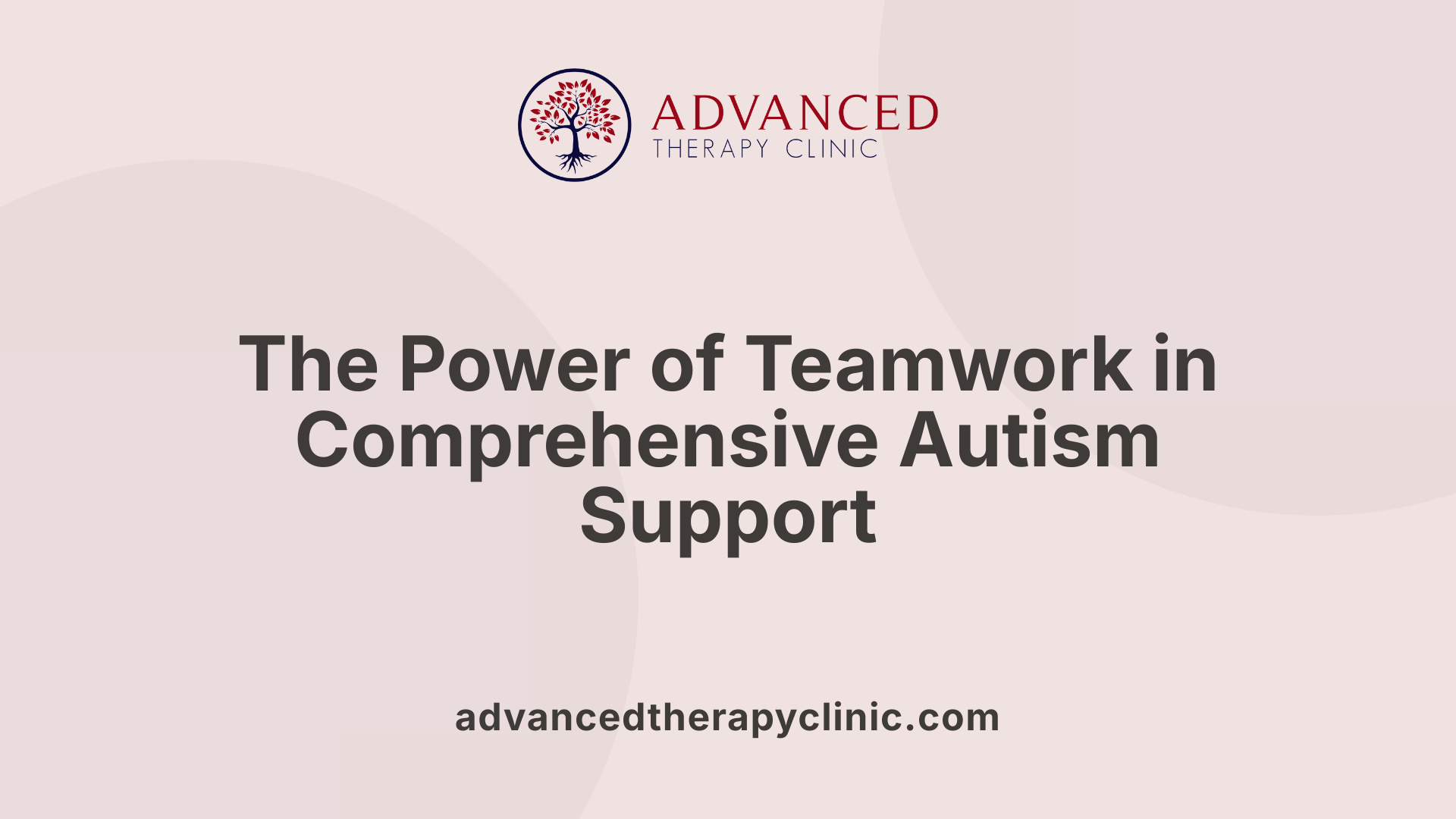What Is Total Care ABA?


Understanding Total Care ABA
Total Care ABA represents a comprehensive and collaborative approach to therapy for children with autism and developmental differences. It combines Applied Behavior Analysis (ABA) with other therapeutic disciplines such as occupational, physical, and speech therapy to address a full spectrum of developmental needs. This integrative method not only focuses on behavior and skill-building but also encompasses sensory processing, communication, motor abilities, and daily living skills — all crucial for fostering independence and overall well-being.
The Core Principles of ABA Therapy

What are the fundamental components of ABA therapy?
Applied Behavior Analysis (ABA) therapy is structured around skill building, behavior management, and communication improvement, all tailored to the individual's unique needs. At its core, ABA employs techniques such as positive reinforcement and discrete trial training to nurture specific positive behaviors and essential life skills.
How does ABA address behavior reduction?
Reducing problematic behaviors is critical in ABA. Therapists conduct functional behavior assessments to understand the root causes of these behaviors. Based on these insights, strategies like differential reinforcement are implemented to encourage desirable actions while minimizing negative ones.
In what ways does ABA enhance communication?
ABA focuses heavily on improving communication and social skills. It teaches language by linking words to their meaning and function in daily life. For children who are nonverbal, ABA incorporates tools such as picture exchange communication systems to facilitate expression. Group therapy sessions often support peer interaction and foster social connections.
How is ABA treatment individualized?
Treatment plans are highly personalized, considering each individual's pace and preferences. ABA often involves intensive therapy, sometimes up to 30 hours per week, with a strong emphasis on practical and functional skills across a broad range of developmental areas. Progress is meticulously tracked through data collection to ensure effectiveness and adaptability.
The Role of Sensory Integration Therapy within Total Care ABA

How does sensory integration therapy complement ABA therapy?
Sensory integration therapy supports children, especially those with autism, by easing sensory challenges such as sensitivities to noise and light. These sensitivities, reported by 96% of children with autism, can significantly impact comfort and participation in daily routines. By helping children better process sensory information, sensory integration therapy fosters self-regulation and reduces distress.
When paired with ABA therapy, which focuses on building specific skills and shaping positive behaviors, sensory integration therapy enhances overall effectiveness. This combined approach addresses both the sensory needs and behavioral goals of each child, creating a more personalized and supportive treatment.
Sensory integration benefits
The therapy uses targeted activities to improve motor skills and coordination. This development not only boosts confidence but also advances independence in everyday tasks. Improved sensory processing supports children in managing their environment and participating actively.
Collaboration with ABA
Occupational therapists specializing in sensory integration work closely with ABA therapists to set shared goals for each child. This collaboration ensures consistency across different settings and helps tailor interventions to the unique sensory and behavioral profile of the individual. Such teamwork promotes holistic development.
Motor skills enhancement
Beyond sensory regulation, sensory integration therapy enhances motor abilities by improving coordination through carefully designed exercises. These gains support better engagement in learning and play, complementing the practical skills ABA therapy aims to build.
Together, sensory integration therapy and ABA provide a comprehensive strategy that nurtures both the body's and mind's needs, helping children with autism thrive with greater confidence and independence.
The Impact of Occupational and Physical Therapy in a Holistic Treatment Plan
What contributions do occupational and physical therapies make in supporting children with autism?
Occupational therapy (OT) plays an essential role in helping children with autism manage sensory challenges. It focuses on developing practical daily living skills such as self-care, feeding, and handwriting. Additionally, OT supports children during transitions and meltdowns, promoting their smooth participation in everyday routines.
Physical therapy (PT) complements these efforts by targeting gross motor skills like sitting, crawling, and walking. It enhances core strength, balance, and endurance, which are crucial for a child's ability to engage in learning and daily activities. PT also involves assessing and recommending orthotics and mobility aids when needed.
Crucially, OT and PT collaborate closely with Applied Behavior Analysis (ABA) therapy. This interdisciplinary teamwork sets shared goals and ensures therapy is consistent across different environments. Such coordination tailors treatment to each child's unique developmental profile, promoting well-rounded growth.
Together, occupational and physical therapy contribute significantly to a holistic approach. They support not only sensory and motor development but also help children gain independence and confidence in their everyday lives.
Speech Therapy's Essential Role in Total Care ABA

How does speech therapy integrate with ABA to enhance communication?
Speech therapy is a critical component in supporting children with autism, particularly in addressing complex communication challenges. These include verbal and nonverbal communication issues as well as difficulties with social interaction. Speech-language pathologists (SLPs) perform detailed evaluations to tailor individualized therapy goals suited to each child's unique needs.
Integrating speech therapy with Applied Behavior Analysis (ABA) leads to a comprehensive approach that targets language development and communication skills within behavioral intervention frameworks. ABA therapy focuses on building language and social skills through strategies such as discrete trial training and positive reinforcement.
Speech therapy complements these techniques by focusing on speech clarity, vocabulary enrichment, and social language use, improving children's ability to participate in conversations and engage more fully with peers and family.
The collaboration enables children, including nonverbal learners, to utilize communication tools like picture exchange systems more effectively. This integrated support fosters stronger social connections and enhances overall well-being.
In summary, speech therapy integrated with ABA forms a powerful team effort, helping children with autism progress in communication and socialization, promoting confidence and meaningful interactions in daily life.
Collaborative Therapy: The Key to Holistic Development

Why is collaboration between ABA therapists and other therapy disciplines important?
Collaboration among ABA therapists, occupational therapists (OTs), physical therapists (PTs), and speech-language pathologists (SLPs) is vital to fully support children with autism. Each discipline targets unique aspects of development—behavior, sensory processing, motor skills, and communication—ensuring no critical area is overlooked.
Interdisciplinary teamwork and shared goals
By working together, therapists set shared treatment goals tailored to each child’s needs. This unified approach allows consistent strategies across environments, whether at therapy sessions, home, or school. It helps children generalize skills smoothly, fostering independence and confidence.
Consistency across settings
Consistent approaches across settings prevent confusion and reinforce learning. When therapists communicate regularly, they adjust interventions to fit the child’s progress and challenges, blending techniques from sensory integration, speech therapy, ABA, and physical therapy.
Promoting holistic growth
This cooperative therapy model addresses behavior, communication, sensory sensitivities, motor coordination, and daily living skills simultaneously. It offers a comprehensive support system, improving skill retention and real-life application. Ultimately, this nurturing partnership helps children thrive physically, cognitively, and socially, leading to better long-term outcomes.
Early Intervention: Maximizing Outcomes through Total Care ABA

How does early intervention enhance the effectiveness of Total Care ABA?
Starting therapeutic interventions right at the time of diagnosis significantly boosts the potential for improving communication, social interaction, and cognitive development in children with autism. Early intervention integrates multiple therapies to address the broad spectrum of needs these children face.
Occupational therapy (OT) plays a crucial role early on by focusing on daily living skills, sensory processing, and promoting participation in everyday routines. This helps children become more comfortable and independent in their environments.
Physical therapy (PT) complements these efforts by building gross motor skills such as sitting, crawling, and walking. It also supports core strength and balance to increase endurance, allowing better engagement in learning and daily activities.
Speech therapy addresses communication challenges by creating individualized goals tailored by speech-language pathologists. It enhances verbal, nonverbal, and social communication skills, supporting overall social interaction.
At the center of this multidisciplinary approach is Applied Behavior Analysis (ABA) therapy, which involves intensive, individualized treatment often up to 30 hours per week. ABA techniques such as positive reinforcement and functional behavior assessments help build specific skills and reduce problematic behaviors.
Together, these therapies form a comprehensive, supportive system known as Total Care ABA, promoting holistic development. By collaborating across disciplines, therapists ensure consistency, personalized goal-setting, and improved outcomes. Early intervention thus sets a strong foundation for children to gain confidence, independence, and a better quality of life.
A Holistic Approach to Supporting Children to Thrive
What Are the Overall Benefits of Integrating Multiple Therapies within Total Care ABA?
Integrating therapies such as ABA, occupational therapy (OT), physical therapy (PT), and speech-language pathology (SLP) creates a comprehensive support system for children with autism. This collaboration addresses not just behavior but also sensory processing, communication skills, and motor development. Together, these therapies enhance skill acquisition and retention more effectively than any single method alone.
How Does Integration Promote Independence and Confidence?
Sensory integration therapy helps manage sensitivities like noise and light, improving comfort and motor coordination. OT develops self-care and practical daily living skills, while PT builds core strength and balance. Speech therapy enhances communication, including social language skills. As children master these areas, they gain confidence and independence to participate in daily routines and social activities.
What Is the Role of Collaboration Among Therapists?
ABA therapists work hand in hand with occupational, physical, and speech therapists to set shared goals tailored to each child's unique needs. This teamwork assures consistency across different environments and maximizes engagement. By addressing the whole child—body, brain, and behavior—the collaborative approach promotes holistic development.
How Does This Approach Help in Real-life Application?
The integration ensures that skills learned are functional and generalizable. For example, ABA focuses on practical language and behavior, while OT and PT facilitate motor skills necessary for daily activities. Speech therapy supports effective communication in social settings. This synergy empowers children to apply their skills confidently in everyday life, fostering overall well-being and growth.
Embracing Total Care ABA for Lasting Impact
Total Care ABA embodies a multidisciplinary, integrated therapy model that goes beyond traditional behavior analysis. By uniting ABA therapy with sensory integration, occupational, physical, and speech therapies, this approach delivers personalized, evidence-based interventions that comprehensively support children with autism and developmental differences. The collaboration among professionals ensures consistency, addresses the diverse needs of each child, and fosters meaningful developmental progress. Early intervention with Total Care ABA lays the groundwork for improved communication, social skills, independence, and quality of life — empowering children to reach their full potential and thrive confidently in their everyday lives.
References
Recent articles

What Is Total Care ABA?
Integrating Therapies for Comprehensive Autism Care

How to Incorporate Physical Therapy Exercises at Home
Mastering Your Recovery: Expert Tips for Home Physical Therapy Success

How ABA Therapy Supports Emotional Growth in Children with Autism
Unveiling the Impact: ABA Therapy's Role in Emotional Development for Children with Autism

Can You Be Smart and Have Autism
Exploring Intelligence and Autism: Myths, Realities, and Interventions

Vocal Stimming In Autism
Understanding Vocal Stimming: A Key Aspect of Autism Spectrum Behaviors

How Speech Therapy Assists with Comprehending Complex Sentences
Unlocking Language Potential: The Role of Speech Therapy in Mastering Complex Sentences


